Can eye cream make skin more dry? A friend asked me this question recently. She started using a new eye cream that made the skin around her eyes dry, and she didn’t understand why it would do that instead of moisturizing it.
It’s a very good question, and a good opportunity for me to elaborate on some important concepts in skincare.
The answer is unfortunately yes.
It is possible for an eye product to leave the skin feeling more dry. And not just eye creams. Serums and moisturizers too.
It depends on two things. The climate and the ingredients in the product.
How Climate Affects Moisture Levels In Skin
When the climate is very dry, the humidity is low. Humidity is a measurement of how much water vapor there is in air. When the humidity is very low, water evaporates out of skin into the air quickly. This is because water moves from an area of higher concentration (of water) to an area of lower concentration (of water). The dry air literally sucks water out of the epidermis.
So, aren’t humectant (water-binding) ingredients such as Hyaluronic Acid supposed to help keep water inside skin longer? Yes. Up to a point. Let’s see when it doesn’t.
When a humectant or other hydrating ingredient is applied topically to skin, it attracts and binds to water inside skin. That water comes from two sources:
1). Water residing in the lower layers of the epidermis. You have water in the lower epidermis of your skin. That water comes from the dermis (the layer of skin below the epidermis). This water in the dermis comes from your bloodstream. And the water in your bloodstream comes from the rest of your body. In other words, the water that you drink. (This is how your skin is primarily fed water and why it’s so important to stay hydrated by drinking water throughout the day.)
Humectants applied to skin start off in the Stratum Corneum (outermost layer of epidermis) and travel downward. These humectants pull up water stored in the lower layers of the epidermis. This water is held inside the lipid bilayers (the “glue” holding skin cells together).
2). Water from the atmosphere. If it’s humid enough, the humectants in the Stratum Corneum also attract water from the air, not just the lower epidermis. That water is pulled into the Stratum Corneum (and trapped in the lipid bilayers too).
If on the other hand, it is the opposite of humid and there is very little humidity outside, water travels in the opposite direction – it escapes from skin and goes into the atmosphere, even if there are humectants inside skin. This is why:
- the humectants in the upper part of the epidermis pull water out of the lower epidermis
- the low humidity air then pulls all that water out of the upper epidermis (i.e. low humidity overpowers the water-binding capacity of the humectants)
- the epidermis is left with less water than it started with, leaving skin dehydrated and feeling dry
This is why hydrating (humectant-rich) serums or moisturizers can actually make skin worse in dry climates.
If you live in a dry climate and find yourself with dry skin after using “hydrating products”, this may be the reason. In this situation, it is very important that you apply occlusive or lipid-rich products (moisturizers, oils, or sunscreens) as the final layer of your routine. Occluding the skin is crucial for preventing dehydration in dry weather. It is also important for keeping the barrier function intact.
The Ingredients In The Product
The next consideration is what’s inside the eye product. My friend was using an eye gel, not an eye cream.
Gels are designed to be lightweight – for oilier skin types and hot, humid weather. Traditional, water-based gels are often made with the kind of alcohol that is drying to skin (because it alleviates skin that is suffering from excess oil or humidity). When a product contains this kind of alcohol, moisture is drawn out of skin faster.
Additionally, low molecular weight humectants, such as propylene glycol or butylene glycol, draws water out of the lower epidermis and into low humidity air too.
Another culprit is a reaction or sensitization to an ingredient in the product. If any ingredients are irritating to your skin, it will respond with inflammation, which you may or may not be able to see. Low level inflammation is not visible but is still damaging skin. Inflammation is often accompanied by dryness (because it impairs the barrier).
Tips For Preventing Dry Eyes
If you find the skin around your eyes getting dry easily, try these tips.
1. If you are located in a dry climate, be sure to use an occlusive eye cream, not a gel.
A dry climate is any place where the humidity is low. Examples:
- the Southwestern United States in the summer (e.g. Arizona, Nevada, New Mexico)
- any desert anywhere on the planet at any time of year
- winter-time or when the temperature drops below 50 degrees Fahrenheit (10 degrees Celsius)
- ski slopes and any other place where there is snow
- any windy area
An occlusive eye cream is first of all, a cream or balm. Not a gel (specifically, a water-based gel). A silicone-based gel is a different story – more on this below.
Many eye creams are called a “cream” even if they have a lotion texture. By cream, I mean something that is more solid than liquid. It should not move that much. For example, if you put some cream on your finger and turn your finger upside down or hold it up vertically, the cream won’t slide downward like a lotion or serum.
A balm is a very thick cream, a solidified oil that melts into liquid oil upon contact with skin, or a waxy solid.
A cream or balm will have more occlusive ingredients than a water-based gel. Occlusive ingredients seal skin and slow down water loss by creating a temporary film over the surface of skin. They are typically rich in lipids, but may also contain silicone ingredients. A large amount of silicone ingredients makes a product occlusive. Some eye gels contain a large amount of these silicones ingredients (‘silicone-based’), but the majority of gels are not this type. Silicone-based gels have a different texture than water-based gels. They are thicker and drier (like the feeling of a classic makeup primer).
Water-based gels are not suitable for any type of dry skin. And skin around the eyes, regardless of skin type, tends to be naturally dry (without the help of any moisturizing products; more so for women than men because of gender differences in oil production). In general, I would not recommend using a gel around the eyes unless the air is fairly humid or you plan to put something over it. But of course there are exceptions, and some gels (such as those with a high amount of silicones) can be perfectly fine.
So now comes the tough part. Eye creams come in all different weights – some are light, some are heavy, some are sticky. The viscosity is not always a clear indicator of how long the cream will moisturize. But it is one way to search.
I like sticky. Because the stickier it is, the more occlusive it is. It’s pretty hard for things to penetrate or escape from a sticky substance. Water has a tougher time escaping through a sticky layer over skin.
An example of a ‘sticky’ eye cream is Shiseido’s Benefiance WrinkleResist Eye Cream. I like this eye cream because it is stickier than most eye creams but without actually feeling sticky. It’s not fancy in terms of having age-fighting ingredients, but it is a mighty fine occlusive eye cream.
An example of an occlusive eye balm is Indie Lee Calendula Eye Balm, which I reviewed recently. The oils and wax in this balm make it occlusive. This also does not have fancy age-fighting ingredients, but it makes a great final layer over the eyes, especially at bedtime.
If you want to give your eyes powerhouse age-fighting ingredients, you can do that through an eye serum or face serum applied before a balm.
2. Don’t go out with just a hydrating toner or serum around the eye area. Make sure you apply a cream over it.
You need to seal skin with occlusive ingredients to slow down water loss. This is true for any part of the face, but especially important around the eyes, where there are few sebaceous glands and therefore less oil production. The skin around the eyes is thin too (so water loss is faster). Both the lack of oil production and the thinness of the skin are why eye skin dehydrates and wrinkles easily.
The good news is that occlusive ingredients are found in most eye creams, moisturizers, and oils. So you don’t really need to search for them. All you need to do is sample different creams to find the one that suits your personal preferences.
3. Apply sunscreen around the eyes (over an eye cream).
Any kind of heat or UV exposure dries out skin. A sunscreen minimizes heat damage to skin. And it provides extra moisturization as well as an occlusive barrier.
Find a sunscreen that doesn’t irritate your eyes. Avoid sunscreens with the active ingredient Avobenzone, as this can be irritating on the eyes for some people. Mineral sunscreen ingredients (Zinc Oxide, Titanium Dioxide) are unreactive and therefore do not cause irritation or adverse reactions (unless you have a specific allergy to either one).
But be careful, some mineral sunscreens can be drying around the eyes. If you apply an eye cream first (before the sunscreen), it will mitigate this problem. Watch your skin carefully the first few times you use a mineral sunscreen around the eyes. Observe the skin in the middle of the day, and then again at night. See if the skin has crinkled or crusted.
If you see crinkling or crusting, observe how your skin looks without the sunscreen and just an eye cream (at the same times of day). Do you see a difference? If you do, it’s the sunscreen drying out your skin and you should switch to a different one.
4. If your eyes are still dry after an hour (or later) after applying a cream, put another layer of cream over it.
Your eye cream may not be emollient enough for your skin. In that case, apply more of it or a different eye cream later. I do this because very few eye creams are emollient and long-lasting enough for my skin.
The rationale for applying more later rather than more all at once? To allow the first layer of eye cream to fully absorb into skin. Your skin can hold more if you give it time to absorb ingredients. Allowing time to pass will also give you a clear indiction of whether the skin is dry. It will also prevent over-clogging.
Be careful with the amount of eye cream you use though. Always start off conservatively and build up to more if you need it. Sometimes, milia (white bumps) form around the eyes when a product is too rich or if too much is applied.
5. Press the cream into skin while you’re applying it.
Pressing not only prevents unnecessary tugging, it increases the penetration of the cream into skin. The pressure of your finger on skin warms it up too, which also increases penetration.
By pressing, I mean hold your finger over skin for 2-3 seconds. Then move to an adjacent area and hold it there, working your way around the eye socket.
6. If your budget allows, consider using an eye mask a few times a week.
I don’t mean a sheet mask. By eye mask, I mean a cream that you apply, leave on for 10-15 min, and then tissue off (if there is excess). Or it is a cream that you leave on skin overnight while sleeping. Either way, it’s a cream that is meant to be absorbed into skin.
I will say though, I am not a huge fan of products marketed as “eye masks” because most are just glorified versions of eye creams (and don’t perform any differently). But I do appreciate eye masks that are meant to soothe sore or tired eyes.
A more useful way to allocate your skincare budget, in my opinion, is to buy 2 eye creams rather than 1 eye cream and 1 eye mask. Skin conditions change over the course of a year and with changes in the weather. There are times when you may want a lighter cream, and times when you’ll need a thick cream. It’s nice to have the option of choosing a cream whose weight is suitable for that day’s weather conditions.
But if you can’t spend on more than one eye product, that’s ok too. You know what to do – just apply more cream as needed and keep that skin protected from the sun with sunscreen.
Further Reading:
- How to Apply Eye Cream For Optimal Results
- The Skin’s Barrier Function
- How to Choose The Right Moisturizer
Want articles delivered straight to your inbox? Sign up here.

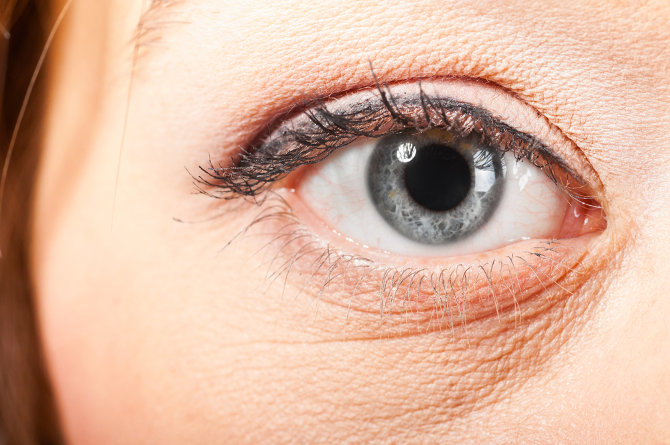
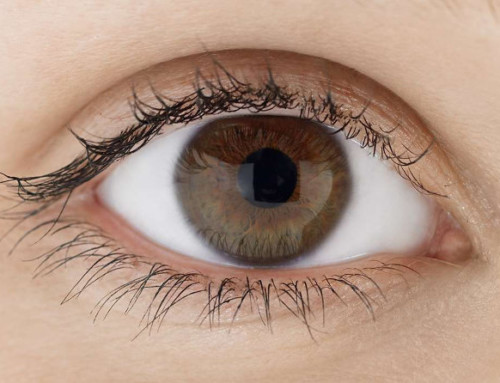
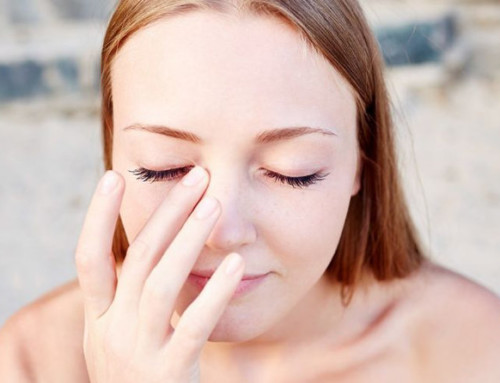


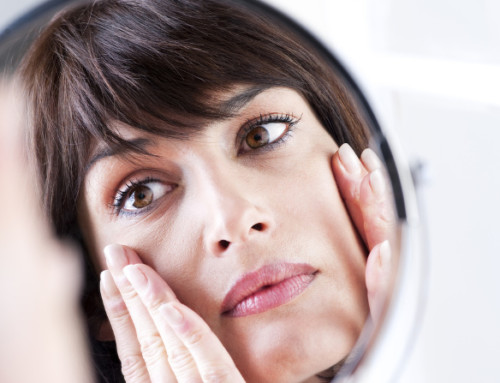

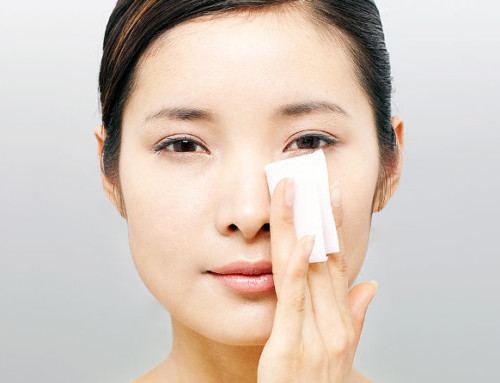
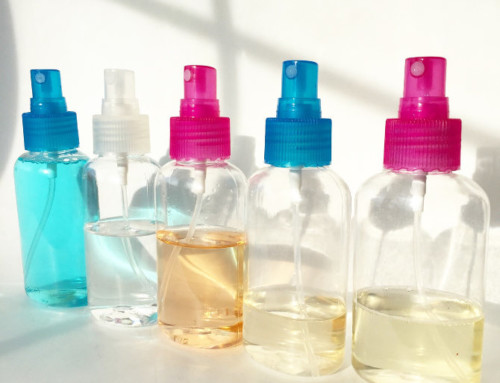


These are all wonderful tips! I do have a question though 🙂
I live in a very dry climate (cold, snow, mountains) and have blemish prone skin. It is generally dehydrated but if I use an occlusive product it breaks out. Do you have any thoughts on this?
Thank you!
Thank you Lauren! Have you tried using a face oil? An oil, which is occlusive, provides beneficial fatty acids, and for acne prone skin, it helps nourish and repair a barrier that might be dried out from acne products or low humidity. If you haven’t seen this article, I elaborate on using oils here: All About Face Oils. In your case, I would suggest a face oil rather than an occlusive moisturizer. The oil is less likely to break you out.
Great tips Rita! It was a pleasure to read. I’m interested in your recommendations for eye masks. Hugs!
Thank you Patricia! Hugs 🙂
Thank you Rita 🙂